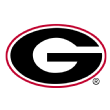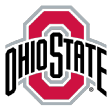Championship week is here in college football, and for the first time in a while, all the power-conference title games carry playoff implications.
The Pac-12, excluded from the playoff party since 2016, kicks it off Friday night as No. 5 Utah takes on No. 13 Oregon at Levi's Stadium. Saturday's slate begins with an Oklahoma-Baylor rematch in the Big 12 championship game. It continues in the SEC championship with the highest-profile pairing, as No. 2 LSU faces No. 4 Georgia.
Defending national champion Clemson has one more hurdle to return to the College Football Playoff for the fifth consecutive season. Dabo Swinney's team takes on Virginia in the ACC title game. The night wraps up with a rematch between No. 1 Ohio State and No. 8 Wisconsin in the Big Ten championship.
I spoke with coaches about the championship matchups, as well as with some coaches who will be working this weekend. Here are scouting reports for all five contests, sorted by kickoff time.
Jump to: Big 12 | SEC | ACC | Big Ten
Friday


Pac-12: No. 5 Utah (11-1) vs. No. 13 Oregon (10-2)
8 p.m. ET, ABC
Line: Utah by 6
Even before Oregon lost at Arizona State on Nov. 23, Pac-12 coaches leaned toward Utah in this matchup in Santa Clara, California. They see the Utes as more complete, more experienced at key spots, and a team that matches up well with the Ducks both at the line of scrimmage and on the perimeter.
"We all think Utah's the much better team," a Pac-12 coordinator told me. "Not like they're going to beat them by a couple scores, but when both of them play well, Utah's no doubt a better defense, and offensively, they've got more weapons to attack someone."
Utah's emergence on offense under new/old coordinator Andy Ludwig (he held the same role from 2005 to 2008) has elevated the potential for the Utes, who entered the season with the Pac-12's most accomplished defense. Running back Zack Moss and quarterback Tyler Huntley lead the Pac-12's top rushing offense (214.6 yards per game), but Huntley's progress with his accuracy (75.5% completions, No. 2 nationally) and downfield prowess (14.8 yards per completion) gives the Utes an entirely different look.
Although both teams lack a premier wide receiver, Utah seemingly has more options, with seven players recording 12 or more receptions and five averaging more than 14 yards per catch.
"Very balanced," coach Kyle Whittingham told me of Utah's offense. "We've been ahead in so many games, where we run the ball in the end, so it's kind of skewed. But when the game's in the balance, it's pretty close to 50-50. As a former [defensive] coordinator, that's the toughest offense to defend."
The task falls to first-year Ducks defensive coordinator Andy Avalos, who has dramatically improved the unit. Oregon allows just 4.8 yards per play and, other than the Arizona State loss, rarely busts for big gains. The Ducks have 17 interceptions and must force mistakes from Huntley.
"They've got guys in the right spot, they're not screwing things up like they have in the past," a Pac-12 coach said. "[Avalos] was a real game-changer hire."
Coaches think Oregon's defense will have to grind out a victory, since they don't expect much from the Ducks' offense against a Utah defense that ranks as one of the nation's best units. Oregon quarterback Justin Herbert has been very good (3,140 pass yards, 31 touchdowns) and plays behind an experienced and athletic line.
But coaches aren't overly impressed with the Ducks' receivers or backs, and see limitations with the scheme.
"They're not very diverse on offense," a Pac-12 coordinator said.
"[Utah is] more multiple on offense," another coordinator added. "Oregon's kind of one-dimensional with Herbert."
The Ducks are certainly capable of winning, but more coaches who have faced or scouted the teams expect the Utes to claim their first Pac-12 title.
"Oregon's solid but I don't see it," a coach said. "Utah's so physical and the quarterback's playing great. They can run the ball, the quarterback's accurate and making good decisions, and they're dominant on defense.
"I like Utah."
Saturday


Big 12: No. 6 Oklahoma (11-1) vs. No. 7 Baylor (11-1)
Noon ET, ABC
Line: Oklahoma by 8
The teams' first meeting, in Waco, Texas, featured a seismic momentum swing, as Baylor led 28-3 in the second quarter and 31-10 at halftime before Oklahoma mounted the largest comeback in team history to win 34-31. "They couldn't get 'em off the field in the second half," a Big 12 coach said.
Baylor is a quick-starting team, holding a 200-54 edge in first-half scoring. But it must find ways to sustain on both sides of the ball against a more talented Oklahoma squad in Arlington, Texas.
Defense has boosted Baylor all season, especially up front, where end James Lynch, tackle Bravvion Roy and others lead the Big 12's top pass rush (40 sacks, 88 tackles for loss). "Their D-line's the best in the league," a Big 12 coach said. "OU's second."
Linebacker Terrel Bernard has stepped up after Clay Johnston's season-ending knee injury, leading Baylor in tackles (95) and helping the pressure numbers. The question is whether the Bears can fluster Sooners quarterback Jalen Hurts and one of the nation's best offenses for more than 30 minutes.
"As I told them, the reason why we played so bad in the second half was because we started looking at the scoreboard and hoping that the game ended," Baylor coach Matt Rhule told me. "Our defensive coaches always say, 'Don't get tired of playing great defense.'"
Baylor's strength is playing complementary football, and its offense must stay on the field for more than 17 plays in the second half this time against Oklahoma. The Bears like their options in the backfield: John Lovett and JaMycal Hasty have nearly identical numbers, and No. 3 option Trestan Ebner averages 5.1 yards per carry.
"We've been using a variety of personnel groupings," Bears co-offensive coordinator Glenn Thomas told me last week. "We've got three really good running backs. We've actually been using the quarterbacks a little bit more in the run game. So we have a variety of ways we can attack, not only inside but on the perimeter. I'm trying to give the defenses a lot to prepare for, a lot of different looks."
Oklahoma first-year defensive coordinator Alex Grinch has significantly improved a unit that last season ranked 101st or worse in points allowed, yards per play allowed, interceptions percentage and red zone touchdown percentage allowed. The Sooners' defense isn't Georgia or Ohio State, but it can be very good in stretches, as it showed after halftime in Waco and throughout most of Saturday's Bedlam victory at Oklahoma State.
OU leads the Big 12 in fewest yards allowed (336.1 YPG) and pass yards allowed (195.9) despite lacking much star power outside of linebacker Kenneth Murray and tackle Neville Gallimore.
"He's got two dudes with Murray and Gallimore," a Big 12 coach said of Grinch.
Another key dude is Oklahoma wide receiver CeeDee Lamb, a Biletnikoff Award finalist who missed the first Baylor game with injury. Lamb's production has dropped a bit, but coach Lincoln Riley says he's fully healthy.
"Those guys didn't have CeeDee last time," a Big 12 offensive assistant said. "He's different, man. Him with the ball in his hands is one of the scariest things I've seen on a football field. You hold your breath. Adding that to it, it will be interesting to see if Baylor can hold on."
Coaches respect what Baylor has done, especially on defense under coordinator Phil Snow, but most expect Oklahoma to continue its streak of Big 12 championships.
"OU's going to win," a Big 12 coach said. "Jalen Hurts is too much when it comes down to it. Baylor doesn't gift-wrap anything, though."


SEC: No. 2 LSU (12-0) vs. No. 4 Georgia (11-1)
4 p.m. ET, CBS
Line: LSU by 7.5
The highest-profile championship game also is the one most intriguing to coaches, as LSU's virtually unstoppable offense goes up against Georgia's virtually impenetrable defense in Atlanta.
"The championship game's going to be a wild, strength-on-strength, weakness-on-weakness game," an SEC defensive coordinator said. "The best offense and best defense in the league, and then a struggling offense and a struggling defense."
Although the game could come down to which team's weaker unit fares best, all eyes will be on the Bulldogs' rangy and aggressive defense, and how it handles the Joes -- quarterback Joe Burrow, the Heisman Trophy front-runner, and pass game coordinator Joe Brady, whose concepts have transformed the Tigers' attack.
"[Brady] brought this NFL pass offense down there, and guys are just running wild all over the place," a Power 5 defensive coordinator said. "Other than Auburn, who can match talent across the board and play them in Cover 1 and just run with people, no one has a chance.
"That's where the Georgia matchup will be so interesting, because Georgia will be able to play them with a much better plan."
Georgia's first-year defensive coordinator, Dan Lanning, hasn't received as much hype as Brady, but both are finalists for the Broyles Award (nation's top assistant). Coaches say Lanning has added pressure elements to coach Kirby Smart's scheme.
The result is 26 sacks and 66 tackles for loss, already eclipsing the season totals from 2018 (24 sacks, 65 tackles for loss). The run-pass option structure and LSU's tempo make it very hard for defenses to reach Burrow, who has been sacked more than three times in only three games this season.
"They're elite," an SEC offensive coordinator said of Georgia's defense. "It's the same stuff with new flavor that's making them great. They're a balanced defense."
Coaches say Georgia's best chance is to win at the line of scrimmage, where LSU might be vulnerable. But an SEC coordinator noted how the Tigers "mauled" the Bulldogs last season in Baton Rouge, outrushing Georgia 275-113 in a 36-16 win. Georgia's decorated offensive line seemingly has an edge against LSU's front, which doesn't excel in pressure and allowed 402 rush yards to Ole Miss on Nov. 16.
Although LSU's defense has shown cracks, there's more confidence in the unit than in Georgia's offense, which hasn't eclipsed 24 points against ranked opponents. The Tigers held Texas A&M to zero points and 40 yards in the first half Saturday, pressuring Kellen Mond with multiple linebackers and linemen. Georgia can control games with its backs and offensive line, and LSU has been gashed for some big rushing totals, but coaches think the Tigers' defense matches up well against a more conventional Bulldogs offense that, until last weekend against lowly Georgia Tech, struggled to pile up points.
Coaches respect Georgia's defense but don't think the Bulldogs can shut down Burrow and LSU. Georgia's passing game has been iffy all season, and the Bulldogs will be without top wideout Lawrence Cager (ankle), while George Pickens (suspension) will miss the first half.
"LSU will score 28 or 35 points, and I don't think Georgia can do that without something going their way," an SEC assistant said. "I don't think they have 28 or 35 points in them offensively. They don't have the offense, where if LSU is up 17-0, they can catch up."


ACC: No. 3 Clemson (12-0) vs. No. 23 Virginia (9-3)
7:30 p.m. ET, ABC
Line: Clemson by 28.5
Clemson hasn't been challenged since a Sept. 28 road scare at North Carolina, and has won the past two ACC championship games by an average of 33.5 points. Like in past seasons, the Tigers seem to be peaking at the right time, particularly quarterback Trevor Lawrence and an offense that went through some hiccups during the season's first month.
"You need your best players to be playing their best, and that's exactly what we're seeing right now," co-offensive coordinator Jeff Scott told me. "Trevor's playing excellent. He's playing his best ball of the year here these last [five] games. Same thing with Travis Etienne, and with some of those wideouts and our offensive line. They've definitely learned from some of our early games."
Scott highlighted third-down efficiency and red zone offense as two areas that needed to improve. Clemson has converted at least half of its third downs in three of the past five games (12 of 17 on Saturday at South Carolina). It has 221 points in the red zone in the past seven games after 100 in the first five games.
Virginia ranks fourth in the ACC in third-down conversion defense (33.5%) and tied for third in fewest red zone touchdowns allowed (19). The Cavaliers are a solid defense, excelling with pressure -- 43 sacks, 87 tackles for loss -- but can be vulnerable to strong passing teams, and Clemson is outstanding with Lawrence and a receiving corps led by Justyn Ross and Tee Higgins. Virginia star cornerback Bryce Hall suffered a season-ending ankle injury Oct. 12 at Miami.
"Their secondary's not going to be able to cover Clemson," an ACC coach said of Saturday's matchup in Charlotte, North Carolina. "That's the biggest part. They lost Hall, who was an All-American. Their secondary's not nearly as good without him, and that's probably where they pull away."
Virginia likely will try to replicate what North Carolina did to Clemson: disguise pressure to throw off the Tigers' protection schemes and get to Lawrence, while not abandoning the coverage.
"Their defense played very well," Scott said. "We had four or five offsides penalties, which is not like us. We had some missed assignments by some key players in key moments that really hurt us. The big message coming out of that was, 'If you're not efficient and you're not taking care of the things that you can control, then you're going to put people in a situation where they have a chance to beat you.'"
Coaches say Virginia's best chance is to control the ball and limit possessions, which it does well. Bronco Mendenhall's team ranks ninth nationally in average possession time (33 minutes, 27 seconds per game), but it must stay on the field against a Clemson defense that leads the FBS in fewest first downs allowed (11.5 per game).
Quarterback Bryce Perkins is Virginia's chance in this game. Clemson's defensive numbers are incredible, but the Tigers haven't seen a quarterback who does more for his team than Perkins, who leads the Cavaliers in passing (2,941 yards, 16 touchdowns, nine interceptions) and rushing (687 yards, 196 carries).
"It'll be a better game than people would think," an ACC coach said. "That quarterback at Virginia is real good. He's putting up big numbers on everybody."
An ACC coordinator disagreed, noting, "No chance. Clemson is good and pissed. Bad combo for UVa."


Big Ten: No. 1 Ohio State (12-0) vs. No. 8 Wisconsin (10-2)
8 p.m. ET, Fox
Line: Ohio State by 16.5
Wisconsin has been one of college football's steadiest programs for the past quarter-century. The Badgers also have an Ohio State problem, dropping seven straight to the Buckeyes and 10 of the teams' past 11 meetings.
Ohio State's streak includes a 38-7 victory on Oct. 26 in Columbus and two Big Ten championship game wins: a 27-21 triumph two years ago and the 59-0 beating in 2014 that propelled Ohio State into the playoff. Given the Buckeyes' dominance this season -- 11 of their 12 wins came by 24 points or more, and all have come by double digits -- it seems unlikely the Badgers can keep pace in Indianapolis.
But some coaches expect Wisconsin to provide a challenge. A Big Ten coach pointed to the teams' first meeting, which Ohio State led 10-7 early in the third quarter before pulling away, saying, "Wisconsin played well, minus a few mistakes offensively. It got away from them."
The Badgers' defense can be dominant, as it showed early in the season against Michigan and last week against Minnesota. Other than Rashod Bateman's 51-yard touchdown on Minnesota's first possession, Wisconsin limited big plays, forced two turnovers and applied pressure with linebacker Zack Baun and others. Coaches say the Badgers must confuse Buckeyes quarterback Justin Fields, who has thrown one interception all season, and limit his effectiveness on third down.
"They're going to show different looks they haven't shown all year," a Big Ten assistant said of Wisconsin's defense. "They did that in the first half [in Columbus], and then it got away from them. If you just show the same looks, he'll kill you."
Fields and running back J.K. Dobbins (163 rush yards, two touchdowns) both had huge second halves against Wisconsin on Oct. 26, as the Buckeyes scored touchdowns on four consecutive possessions. Wisconsin's offense went punt, fumble, fumble, punt after its lone touchdown drive. The Badgers must sustain drives and get much better play from quarterback Jack Coan and an offensive line that couldn't block Buckeyes defensive end Chase Young (four sacks, five tackles for loss, two forced fumbles). Young told me afterward that he was surprised not to see more double-teams from a talented Wisconsin line.
The Badgers must keep Young away from Coan, who has quietly put together a strong season, completing 73.2% of his passes (third nationally) with 17 touchdowns and only four interceptions. Last week, Michigan showed in the first half how to attack Ohio State's defense (seven passes of 20 yards or longer). Are Coan and the Badgers capable of so many chunk plays through the air?
"It comes down to how Coan plays," a Power 5 coach said. "The first game, he really didn't play very well."
Big Ten championship games tend to be high-scoring, as teams go from playing in cold weather to ideal conditions inside Lucas Oil Stadium. "It always favors the faster team," a Big Ten coach said. The Buckeyes clearly have an edge there, but coaches think the Badgers will compete.
"They've got to Wisconsin them," a coach said. "Ball control, shorten the game, make a big play or two in the kick game, win the turnover battle, and limit the explosive plays. It's going to take a very clean game."
